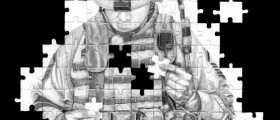
Split personality disorder, also known as dissociative identity disorder or multiple personality disorder, is a psychiatric diagnosis that refers on a condition in which a person displays multiple separate personalities or identities. Each of the personalities has its own distinctive pattern of perceiving and interacting with the world. These clearly distinguished identities are also called alters, may have different ways of reacting, in both physical and psychological terms. Their emotions may vary as well as their pulse, blood pressure, and blood flow to the brain. These personalities may be of a different sex and age, have a different name, and hold completely different views from the host personality.
Causes of split personality disorder
It is considered that split personality disorder emerges as a response to specific traumatic incidents that happened in the patient’s paste and that are deeply concealed in the patient’s subconscious mind. Psychiatric specialists believe that split personality disorder develops as a mechanism of coping with these traumatic experiences. Stressful events that trigger the disease most often happened in childhood and the patients were commonly victims of the chronic physical, sexual or emotional abuse. Children’s’ personal identity is still forming during childhood and traumatic events may motivate the child to step outside its own personality and view the traumatic event as something that is happening to another person. If a child learns to dissociate, the grown up person may also use this as a coping mechanism throughout the life.Symptoms of split personality disorder
Split personality disorder manifests through a variety of symptoms. The most prominent symptom is the loss of memory. Patient may have difficulties to remember things that happened in his live over a long period of time. Also, when patient gets out from the false personality back to his normal self, he normally doesn’t remember what had happened during the alternate personality episode. Thus, the other significant symptom of the condition is depersonalization. Patient may often feel that he is out of his body and watching the events happening to his own body. Great majority of patients experiences auditory hallucinations, flashbacks from the past, intense fear, and trance state of mind. Some of the symptoms, however, remain unexplainable. One of those symptoms is, for example, incessant headaches without any known underlying cause.
Treatment of split personality disorder
The primary treatment for dissociative disorders is psychotherapy. This kind of method involves numerous techniques such as hypnosis, for example. This kind of treatment is very long but effective in the long term. Other treatments include cognitive art therapy, cognitive therapy, and medication.












-Causes,-Symptoms,-Diagnosis-And-Treatment_f_280x120.jpg)




Your thoughts on this
Loading...